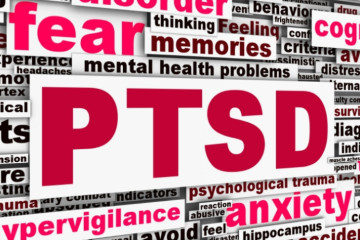10 Cancer Warning Signs Every Man Should Know
Cancer remains the second highest cause of death in the United States, killing an estimated 585,720 people in 2014 (Cancer.org, 2014). It is a disease that is more dangerous for men, with males 50% more likely to die from cancer than women (Paddock, 2014). Given these statistics, it is important that men be vigilant when it comes to spotting cancer warning signs.
The most common cancers that affect men are cancers of the prostate, lung, colon, bladder, skin, blood, kidney, esophagus and pancreas (Apps.nccd.cdc.gov, 2014). While some of these forms of cancer are difficult to diagnose in their early stages, others have clear warning signs. To help you detect these cancers early, here are ten cancer warning signs that men should know.
Urinary Problems
If you are over 50, strain to urinate or experience incontinence, you should be tested for prostate cancer. Prostate cancer is one of the most common forms of cancer in men, with an estimated 233,000 new cases diagnosed in 2014 (Cancer.org, 2014). Additional symptoms that may indicate the presence of prostate cancer include blood in your urine or semen, pain when ejaculating, frequent need to urinate, urinary tract infections and difficultly maintaining an erection.
Changes in Your Testicles
While testicular cancer is less common than prostate cancer, it can have a profound impact on your lifestyle. If you notice swelling, sharp pain or lumps in your testicles, you should have your doctor check for testicular cancer. You should check your testicles for lumps on a monthly basis to detect this form of cancer early. If you have testicular cancer, you may also be feeling fatigued for no apparent reason.
Changes in Your Skin
Skin cancer remains one of the biggest killers in the United States, with approximately 9,710 men expected to die from Melanoma in 2014 (Cancer.org, 2014). About 43,890 men will be diagnosed with melanoma in the same period.
Early diagnosis is crucial when it comes to skin cancer. Check your skin for blemishes that are changing in appearance over time. Look for moles, freckles and sores that have changed in size, shape, color or texture. If you have moles that begin to bleed or itch, it is also a warning sign that you may have skin cancer.
Blood spots under your skin can be an early warning sign of cancer (Cancer.dartmouth.edu, 2014). Certain types of cancer including leukemia, multiple myeloma and Hodgkins lymphoma can cause blood spots that looks like bruising.
Changes in Bowel Movements or Blood in Your Stools
It’s important to check the color of your bowel movements on a regular basis. If you notice blood in your stool, it could be a symptom of colorectal cancer. If your stool begins to change color, it could be a sign that certain organs are not performing well. Blood in your stools can also indicate the presence of rectal cancer.
If you notice your bowel habits changing, it can also be a sign of colorectal cancer. If you experience diarrhea or constipation and it does not go away regardless of the food you eat, see a doctor immediately.
Difficulty Swallowing and a Sore Throat
If you have a sore throat, difficulty swallowing and a sudden change in the sound of your voice, it may indicate the presence of throat cancer. Don’t be concerned if these symptoms last a week or two, as they are associated with the common cold. However, if they persist over a number of weeks, see a doctor to have your throat examined. Other symptoms for throat cancer include weight loss, ear pain and persistent coughing.
Persistent Coughing or Shortness of Breath
Lung cancer remains one of the deadliest forms of the disease, with an extremely low five-year survival rate of 16.6% (American Lung Association, 2014). Lung cancer remains the leading cancer killer in the United States and is expected to kill close to 160,000 people in 2014.
It is essential to diagnose this form of cancer very early to stop it metastasizing to other parts of the body. If you notice persistent coughing, shortness of breath, pain in your chest, loss of appetite, fatigue or blood in your mucus, talk to your doctor immediately.
Back Pain
Back pain can be a symptom of a number of cancers. Because it is common for men to have problems with their back, look for this warning sign in conjunction with other symptoms. For example, if you have persistent back pain in conjunction with unexplained weight loss, fatigue and shortness of breath, it may be lung cancer. Back pain is a common symptom for prostate, pancreatic and colorectal cancers.
Enlarged Lymph Nodes
Lymph nodes are small glands responsible for carrying fluid, nutrients and waste material between body tissues. They are important parts of the immune system because they filter bacteria and viruses. Enlarged lymph nodes can indicate that your body is fighting an infectious disease or cancer. Hodgkin lymphoma and non-Hodgkin lymphoma can start in the lymphatic system, causing your lymph nodes to swell in the early stages. If you notice swollen lymph glands in your armpits, groin, collar bone, legs or neck, talk to your doctor.
Lumps in Your Breast Tissue
Most people don’t realize that breast cancer can also affect men. If you notice lumps in your breast tissue, you should obtain a CAT scan or biopsy of the tissue.
Constant Fatigue or Weight Loss
A common symptom of many forms of cancer is inexplicable weight loss. If you suddenly lose 20 or 30 pounds without changing your diet or exercise regime, look for other symptoms of cancer. Cancer cells use the body’s energy supply, starving other parts of the body and causing weight loss.
By remaining vigilant, you can spot the early warning signs of cancer and obtain early diagnosis. Early diagnosis and speedy treatment can save your life!
Sources
American Lung Association,. (2014). Lung Cancer Fact Sheet - American Lung Association. Retrieved 21 October 2014, from lung.org/lung-disease/lung-cancer/resources/facts-figures/lung-cancer-fact-sheet.html
Apps.nccd.cdc.gov,. (2014). Cancer - United States Cancer Statistics (USCS) Data - 2011 Top Ten Cancers. Retrieved 19 October 2014, from apps.nccd.cdc.gov/uscs/toptencancers.aspx
Cancer.dartmouth.edu,. (2014). Bruises and Blood Spots Under the Skin | Health Encyclopedia | Norris Cotton Cancer Center. Retrieved 19 October 2014, from cancer.dartmouth.edu/pf/health_encyclopedia/bruse
Cancer.org,. (2014). Cancer Facts & Figures 2014. Retrieved 20 October 2014, from cancer.org/research/cancerfactsstatistics/cancerfactsfigures2014/index
Cancer.org,. (2014). What are the key statistics about prostate cancer?. Retrieved 20 October 2014, from cancer.org/cancer/prostatecancer/detailedguide/prostate-cancer-key-statistics
Cancer.org,. (2014). What are the key statistics about melanoma skin cancer?. Retrieved 21 October 2014, from cancer.org/cancer/skincancer-melanoma/detailedguide/melanoma-skin-cancer-key-statistics
Paddock, C. (2014). Globally, cancer kills 50% more men than women. Medical News Today. Retrieved 20 October 2014, from medicalnewstoday.com/articles/272783.php



